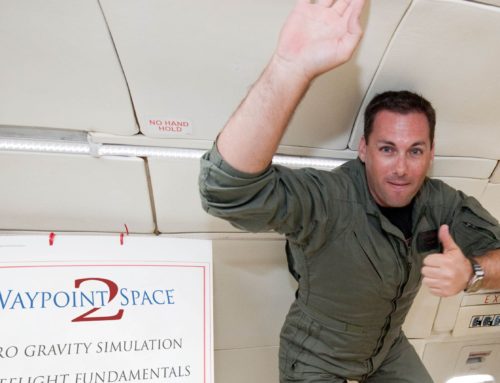WASHINGTON — In an attempt to forestall congressional direction of the process, the U.S. Federal Aviation Administration’s (FAA) Office of Commercial Space Transportation has produced a 50-page list of safety practices that could serve as the cornerstone for future commercial human spaceflight safety regulations.
Formally known as “Draft Established Practices for Human Space Flight Occupant Safety,” the document is the result of information gathering that began last year when FAA officials started sitting in on monthly conference calls with the agency’s industry-led Commercial Space Transportation Advisory Committee (COMSTAC). On these calls, representatives of commercial spaceflight companies discussed areas of their businesses that would be ripe for regulation, once the FAA is allowed to begin rulemaking in about two years.
Under the Commercial Space Launch Act of 2004, the FAA may set rules to protect the uninvolved public from commercial spaceflight activities, such as launches, but it may not regulate industry participants until October 2015 unless there is a catastrophic accident before then. New Mexico-based Virgin Galactic, which aims to fly paying customers to the edge of space, is now poised to begin operations in 2014. If that schedule holds, the FAA would have about a year to study one commercial human spaceflight operation before it could begin writing rules for the entire industry.
Members of Congress and their staff have made it clear, however, that the FAA and aspiring commercial spaceflight companies should not wait until the last minute to begin a safety dialogue.
“This is a vital exercise, because if industry doesn’t take action to adopt safety procedures, Congress will do it for us,” COMSTAC Chairman Mike Gold, director of Washington operations for Bigelow Aerospace, wrote in a Sept. 25 email. Bigelow of North Las Vegas, Nev., is working on inflatable space habitats based on NASA technology.
In a Sept. 25 email, a Senate aide said the upper chamber’s Commerce, Science and Transportation science and space subcommittee is still considering an update to the Commercial Space Launch Act, from which FAA derives its authority to regulate commercial human spaceflight.
“While Congress is discussing this issue, industry should continue to work closely with the FAA on making commercial spaceflight as safe as possible for participants,” the aide said.
The FAA’s draft rules have not been released publicly, but they have been shared with NASA and Capitol Hill, Randy Repcheck, deputy manager for the Regulations and Analysis Division of the Office of Commercial Space Transportation, said during a Sept. 24 COMSTAC conference call.
Industry and government representatives are set to do a deep-dive on the document as part of COMSTAC’s autumn meeting, which will take place at the National Housing Center here Oct. 9 and Oct. 10.
The document focuses on suborbital flights and flights to low Earth orbit lasting up to two weeks with the ability to return to Earth within 24 hours in the event of emergency, Repcheck said. Long-duration spaceflight, such as what Bigelow Aerospace would offer aboard the inflatable space stations it is slowly developing, is not covered in the current draft, he said.
For the types of flights that are covered, the FAA split spaceflight participants into two basic categories: those who are “just along for the ride,” and those performing crew functions, Repcheck said.
The document discusses safety standards in broad terms, setting only general requirements for each type of spaceflight participant. For passengers, such as space tourists aboard one of Virgin Galactic’s air-launched suborbital vehicles, “it’s not about comfort, it’s about coming back without being dead or with serious injury,” Repcheck said. Crew members, on the other hand, should have enough comfort to perform their duties safely.
In an emergency situation, the draft safety document says, commercial spacecraft should provide their occupants with a “reasonable chance of survival,” said Repcheck.
One COMSTAC member on the Sept. 24 call wondered whether the broad and general safety practices listed in the new document would be enough to convince Congress that the industry and FAA should be left alone to set the future regulatory environment.
If the intention of the document is to prevent Congress from stepping in to guide the process, “I think we need to continue to consider whether the contents of the document are sufficient to do that,” said Mark Sundahl, associate dean for administration at Cleveland State University’s Cleveland-Marshall College of Law.
Sundahl questioned, for example, whether prescribing a reasonable chance for survival in an emergency was “a high enough bar to forestall congressional action.”
In February, when the full COMSTAC last met, Ann Zulkosky, a senior professional staffer for the Democratic majority on the Senate Commerce science and space subcommittee, said there was “much interest in updating the Commercial Space Launch Act this year,” possibly with an eye toward extending the office’s authority into Earth orbit.
For the rest of the year, however, Congress still has to resolve partisan gridlock around federal spending that has prevented lawmakers from passing a budget for the 2014 spending year that begins Oct. 1. While lawmakers at the subcommittee level may still be interested in strengthening the FAA’s hand when it comes to commercial spaceflight regulation, it is not clear that they will even have the chance to try in what remains of 2013.
By Dan Leone
To see the original article click HERE


